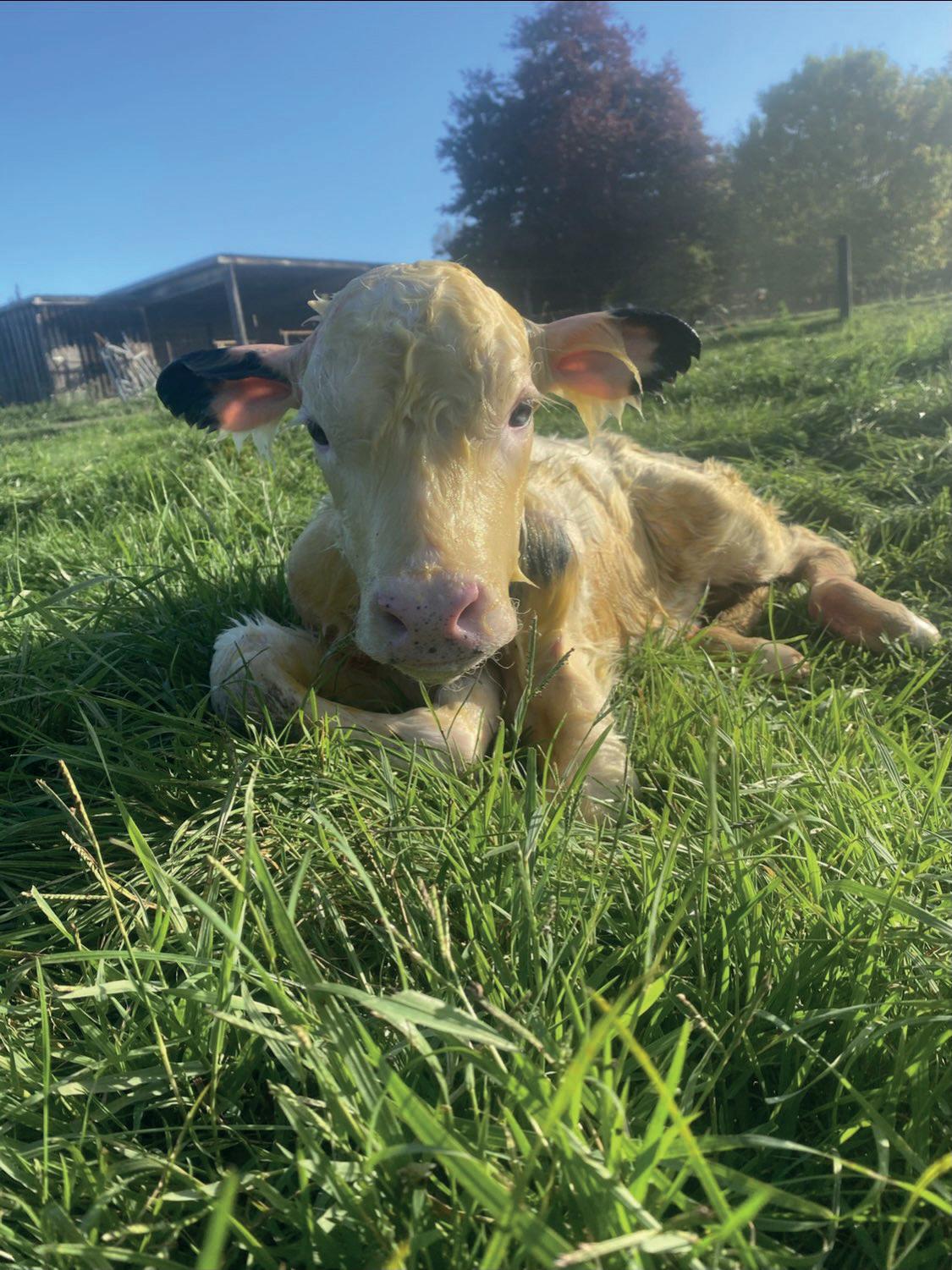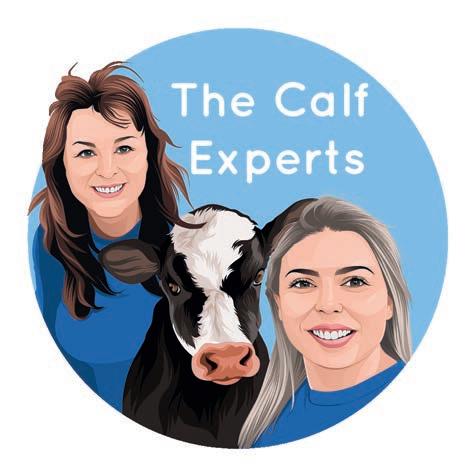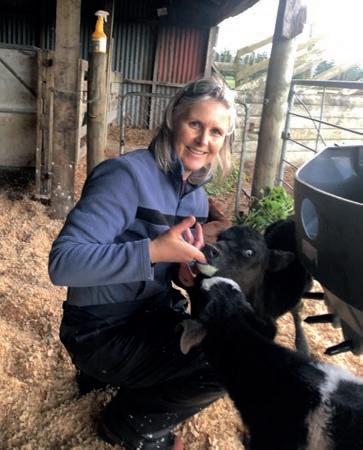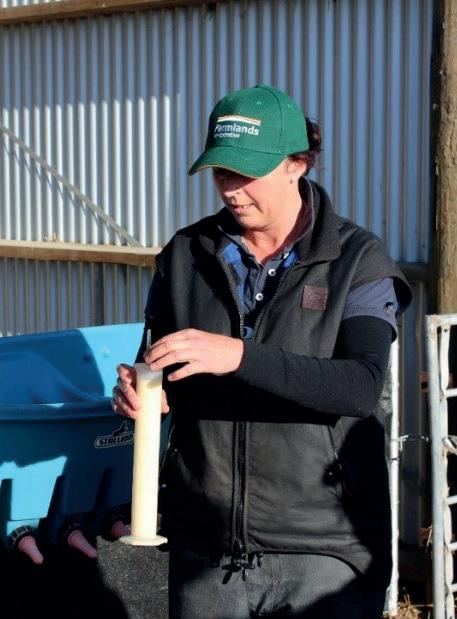
4 minute read
Day 1 colostrum gives calves start they need
Karen Fraser and Stacey Cosnett are on a mission to help farmers grow the best calves possible by delivering accurate and easy-to-understand advice. Check out ‘The Calf Experts’ on Facebook and follow their articles in The Farmlander.

One thing that can get overlooked as the pressures of the season ramp up is our Day 1 handling of newborn calves and colostrum management.
Our cows and calves face challenges as they tend to be calving outside in variable spring weather, with calves often born in wet, cold, muddy environments that compromise them from the get-go. This means we must be extra careful with how we treat Day 1 calves to ensure we set them up for success. From 5 weeks pre-calving until the time of birth, cows produce antibodies called immunoglobulins (IgG). The first milking is considered Day 1 colostrum. It contains high levels of antibodies, energy, protein, hormones, vitamins and minerals. Antibodies have the important job of transferring immunity to the newborn calf, which is born with virtually no natural immunity. The colostrum from the first milking after calving will have the highest antibody levels and is often referred to as ‘gold’ – this is the real good stuff we need to get into our calves on their first day of life. The correct terminology for the 2nd to 8th milkings is ‘transition milk’. This has low levels of antibodies but not enough for calves on their first day of life. Transition milk can be used from Day 2 and continued for 4 days to help add some protection to the gut lining for the calves. We bang on about the 5 Qs of colostrum management. It has been proven that if these are not done well, it can affect calf health and growth. For every hour after birth that colostrum feeding is delayed, antibody transfer decreases by about 5 percent. A calf that does not drink until 6 hours from birth has already lost the opportunity for 30 percent of the possible antibodies entering its bloodstream. The longer calves are without antibodies, the more opportunity there is for pathogens to invade the gut. When certain pathogens like E. coli win the race to the gut before colostrum in those all-important first few hours of life, they can be absorbed into the blood, causing scours and reducing the effectiveness of antibody absorption. The levels of antibodies in the calf’s blood have a direct influence on disease resistance and ultimately performance as a mature beast and hence farm profit. Getting first milking colostrum into Day 1 calves should be top priority.
Rearer gives shout-out to the Calf Experts
Yvette Chard tells how Stacey and Karen helped improve her farm’s calf-rearing programme.
“We turned our calf-rearing programme around by reflecting on seasons gone by. We couldn't have done it without the help of the Calf Experts and our local vet. We spent a lot of time reviewing our results and agreeing to changes for the next season. Year on year we have embedded massive improvements, initially getting some big wins to now fine-tuning. We nicknamed any colostrum under 22 brix* ‘silver’ and it was set aside for our Day 2 calves. Gold went to our Day 1 feed on arrival at the shed. We really celebrated this as it meant our death rate dropped to under 0.5 percent. Being busy through spring and early summer we hadn't noticed until we set goals and measured them that a group of our weaner calves didn't make our targets on the 1st of May. Any weaner not doing well is drafted off every month and put in a mob on grass and pellets. If we can achieve our target to the 1st of May we find the next 12 months take care of themselves. Each change we made initially was a huge focus but now those changes have become business as usual. We are humming along and enjoying the fruits.”
* brix is a measurement used to assess colostrum quality when using a refractometer. | “We are humming along.” Yvette Chard says.

| Karen using a colostrometer to check colostrum quality.

5 Qs OF COLOSTRUM
Quality. It is essential to ensure there are sufficient antibodies in the colostrum so calves can absorb adequate antibodies. IgG (Immunoglobulin) levels in the colostrum can be measured via refractometers or colostrometers. Remember that colostrum from the first milking will have the highest antibody level so it's critical this is isolated on-farm and directed into Day 1 calves. Quantity. A good rule of thumb is 10% of birth weight of high-quality first milking colostrum – so 4 litres for a 40kg calf. A higher volume will be needed if colostrum is of a poorer quality – up to 15% and this can be fed over a 12-hour period. Quickly. The goal is for the newborn calf to receive colostrum in the first 1-2 hours of birth but within the first 6 hours at least. After 12 hours the ability to absorb antibodies into the bloodstream decreases significantly. Colostrum is still beneficial after 12 hours as it lines the intestinal walls to provide protection against the build-up of pathogens. sQueaky clean. Avoid bacterial contamination. Cover and keep all Day 1 buckets clean. Ideally use stainless steel containers. Freshly milked Day 1 colostrum should be fed to calves as soon as it has been collected. Colostrum is the perfect breeding ground for bad bugs so refrigerate it if you don't use it straight away. Quietly. A stressed calf will not be as good at absorbing antibodies across the gut wall. Handle calves quietly and gently.





